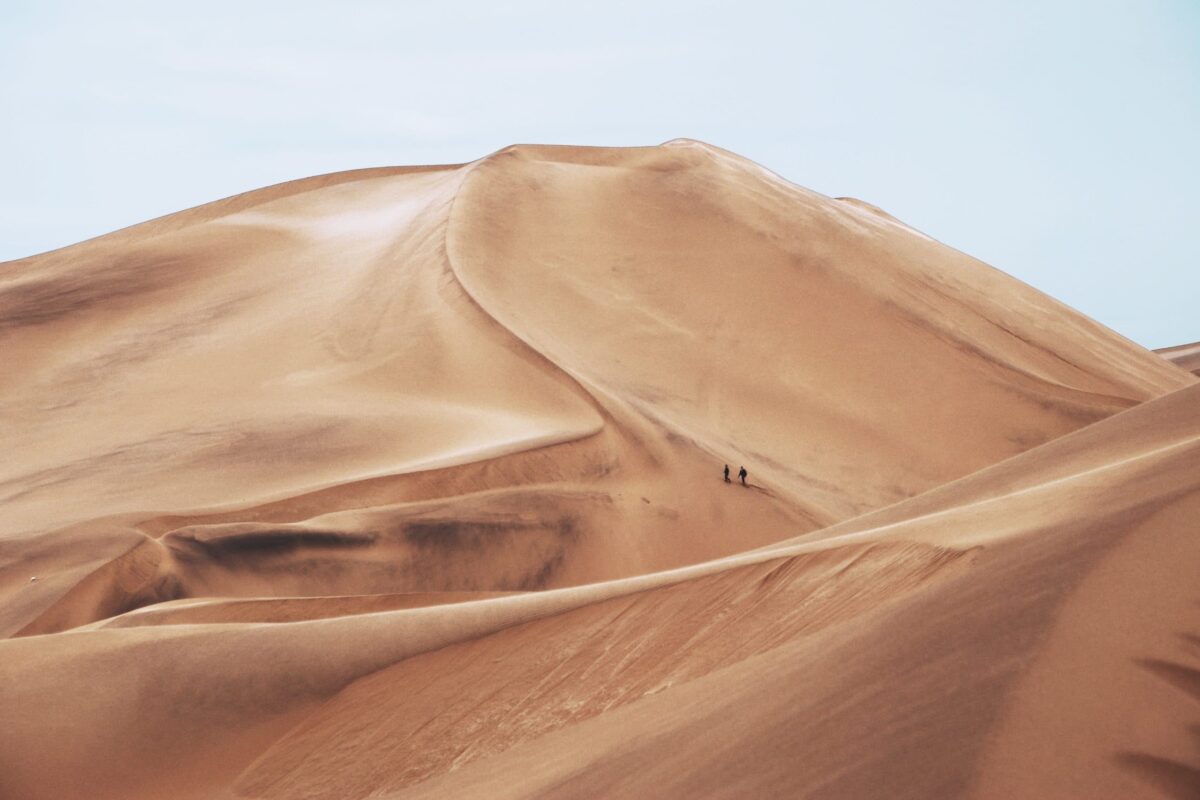In the second of a three-part series looking at spiritual spaces, The Rt Revd Rob Wickham reflects on his desert experience and the need for both richness and emptiness in young peoples’ lives for spiritual development.
In my last article I wrote about kataphatic spiritual spaces, reflecting on our family visit to Disneyland. Some months later, I visited the Sinai desert and spent a few weeks mostly alone. My first week was at St Catherine’s Monastery; founded on the site of the burning bush by St Helena in the fourth century and nestled in the shadow of Mount Sinai, the top of which was a climb of 3,700 steps (in the deep snow, which was not easy). For the second week, I lived as a nomad with two members of the Bedouin: Soleiman and Mohammed (who was deaf and mute). We crossed the desert with no tent and were carried for part of the way by Abud and Zarayan, our trusty camels.
A confrontation with nothing
I am told that in the desert, you stare death in the face; you are only 19 hours from death at any time! But I felt safe in the hands of my companions. I enjoyed watching them; communicating, making food, collecting wood, and planning. Their sign language was a beautiful dance that put my verbal skills to shame. It was also cold, with sub-zero temperatures causing our water to freeze at night. Towards the end of this week, I hit a bad place. I was climbing a desert mountain and found myself frozen in fear as I stared my insecurities, my brokenness, and my pathetic nature straight in the face. Nothing of the certainty of Disneyland was here on a plate, only a confrontation with my own mental health. I needed help and there was none. The desert did not respond and mocked me with its silence. Eventually, I made it to back to lower ground, shaking and alone. I had not reached the top, and I had failed.
A deeper relationship
I needed God more than anything in that moment. A new, deeper relationship with God had begun, shaped by the Jesus Prayer and Charles de Foucauld’s prayer of abandonment. This space of emptiness is scary, but it is the kind of space that we need to create a developing spirituality. Nothingness; face-to-face with our own brokenness and fears.
The desert leads to an ‘apophatic’ place; a place of nothingness, where God is beyond any positive definition. The desert delights in abandonment and urges us to be in the presence of God in fearful awe. We do not revel but we abandon ourselves; for we are nothing, worthless and insignificant. This is a kenotic, self-emptying experience, reminding us that we are not important and worry too easily about insignificant things. This is the world of inner pain, the place of secret cries for help of the young person who senses that no one will listen or take note. Apophatic prayer enables us to accept and to receive God’s love, with God expecting nothing in return. It is when we fully abandon ourselves that we can become our truest selves, made in God’s image.
The need for kataphatic and apophatic spaces
To draw my first two articles together, both spaces are probably needed; I am sure that both are spaces for the Spirit to enable our hearts to cry, “Abba Father”. Moments of apophatic and kataphatic space; prayer for a spirituality and character to form. We need both in order to express God’s love, power and creativity. We must use tools like Disney in our worship, with image, music, and a sensuality, to provide something that transcends our usual experiences. We must be lifted from the everyday into God’s holistic presence, where the shape of the liturgy is a rollercoaster ride to excite us. Yet this can only be embraced if we also learn the practice of apophatic prayer — offering silence for the Spirit to speak and developing our skills to use silence in the act of self-emptying.
More in this series:
- Spiritual Spaces Part 1: Learning from Disney
- Spiritual Spaces Part 2: What I Learned In The Desert
- Spiritual Spaces Part 3: Creating Space to Recognise Truth
Photo: Keith Hardy
